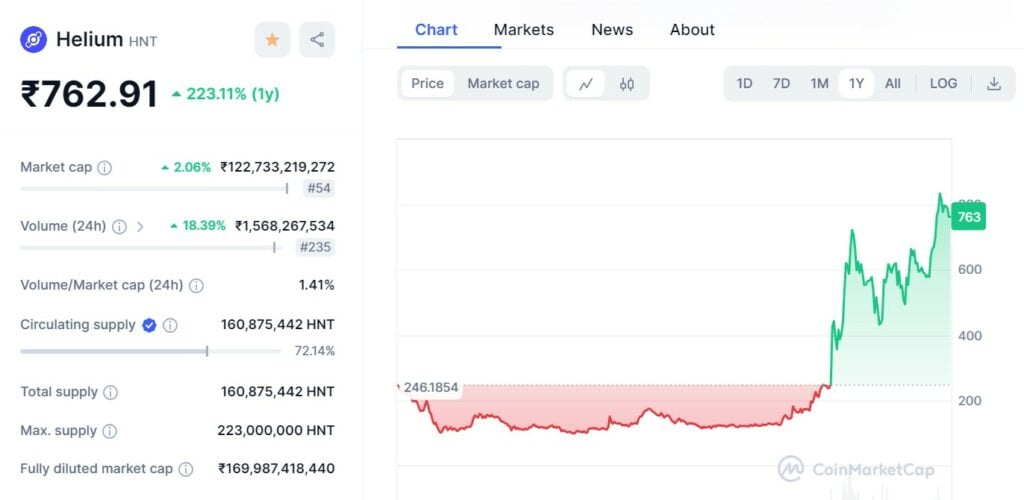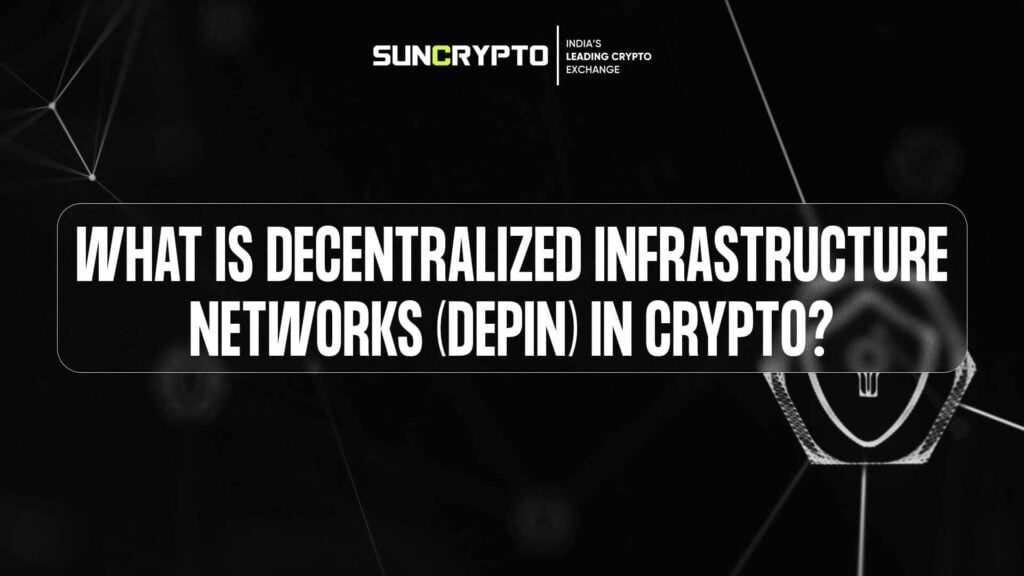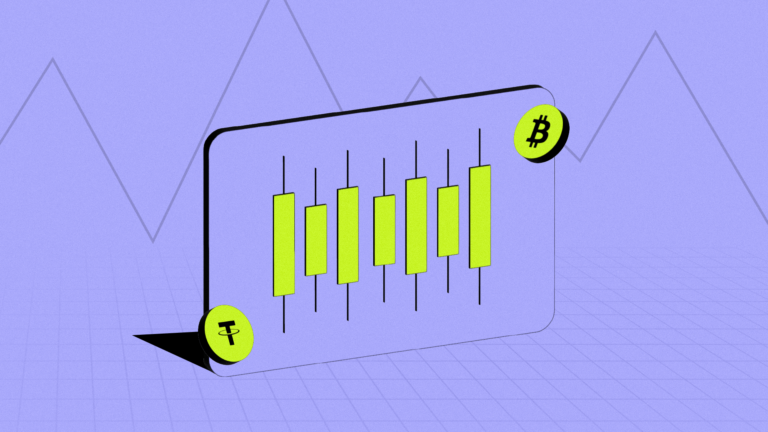In recent years, the emergence of blockchain technology has triggered an evolutionary change in how we view and interact with digital systems. From DeFi to NFTs, decentralization concepts have transformed our digital lives. However, the revolution is not limited to the virtual world.
Enter decentralized physical infrastructure networks (DePINs), a revolutionary concept that applies the ethos of decentralization to real infrastructure, with the potential to change industries and empower individuals in unprecedented ways.
DePINs enable real-time interactions inside physical infrastructures using smart contracts and the Internet of Things (IoT), improving system responsiveness and flexibility to human needs.
Let’s understand it more thoroughly, and we’ll also look at some of the few promising DePIN projects that will thrive in the near future.
What are Decentralized Infrastructure Networks (DePIN)?
A DePIN is a network of crowd-sourced providers that provide real-world services to users while using a public ledger (blockchain) to keep track of the services provided and receive remitted rewards for these services via cryptocurrencies running on the same or a different blockchain network.
Dor DePINs, the blockchain serves as an administrative, remittance, and record-keeping service. As an administrative facility, DePINs deploys the blockchain to provide a permissionless system for providers and users; anyone with sufficient resources can supply the necessary services.

Source: Medium
As a remittance facility, users gain services from blockchain-powered solutions, and suppliers are rewarded with cryptocurrency. As a record-keeping facility, every action is documented on the ledger or blockchain, which is often open to the public.
DePINs are versatile. Their applicability spans across industries, from crowd-sourced geographical services to advanced infrastructure marketplaces that run entirely on the blockchain.
Working of Decentralized Infrastructure Networks (DePIN)
DePIN, like any other network, is made up of two core components: physical infrastructure (duh) and a digital backbone. While the latter consists of a variety of smart contracts managing different project features, the former can be anything from solar panels connected to the network via a controller. These smart contracts operate on a blockchain network, preferably a public and permissionless one.
The blockchain serves as the network’s ledger, documenting transactions and other value exchanges between users, such as acquiring broadband access from someone renting out their router. The network compensates its members with tokens for performing specified useful tasks, such as selling electricity from their solar panels or, well, renting out their routers.
DePIN tokens serve as an incentive mechanism to encourage the supply side — solar panel owners, connectivity providers, sensor array owners, and so on — to improve the network’s capabilities to the point where it can compete with the legacy names that currently dominate the market.
Increasing demand, in turn, encourages more players to enter the supply side, resulting in a self-reinforcing long-term growth circle. To safeguard end users from market swings, DePINs typically include a fiat-pegged utility token, which can be obtained by burning their publicly traded token.
Benefits of Decentralized Infrastructure Networks (DePIN)
▪️ Horizontal Scalability: DePIN enables facilities to expand their capabilities in a more flexible manner. Networks can expand resources rather than boost individual resource capacity. This provides a high level of flexibility, and facilities designed with this method can quickly scale in and out according to demand. The blockchain may manage available resources and ration demands.
Certain suppliers may face a reduced burden if demand is low. In high-demand conditions, the network can reactivate inactive resources, resulting in additional instances and increased overall network capacity with no shifts. Depending on the available latent resources and the DePIN’s rationing system, systems like this can scale forever.
▪️ Community Control – Decentralization: DePIN, like DeFi, decentralizes infrastructure systems, shifting from corporations to a group of individuals dedicating resources to establish a facility. This approach distributes facility control to the many providers, analogous to miners in a PoW network.
DePINs function similarly to industrial DAOs, where all participants contribute resources and have control based on their capabilities. In a system where all providers have equal capacity, the DePIN becomes (nearly) completely decentralized.
▪️ Fair Pricing: DePIN pricing models differ from those used at traditional facilities. The pricing model takes into account the costs incurred by private providers to manage their separate facilities, as well as other network-related issues. Additional charges from the platform may be lower because the platform incurs no costs in providing these services.
DePINs’ pricing strategy is anticipated to be cost-effective and equitable, taking into account basic elements rather than the typical price inflation associated with centralized facilities. DePINs, being a people-powered system, are more likely than businesses to address affordability in their pricing approach.
▪️ Cost-Efficient Operations: The DePI network incurs minimal or no cost to bring the network to life; suppliers have a high level of flexibility in terms of the services they offer. For example, a provider may commit their facility to numerous networks. Users also pay a fair fee for the services provided by the network. DePINs are designed to provide the best service at the lowest feasible cost, resulting in a cost-effective solution.
▪️ Permissionless: Anyone can contribute resources to a DePIN. Anyone can use the services provided by a DePIN. There is no negotiation over price or user screening for any of these. Once a provider has the necessary infrastructure, they can create a provider-side account on a DePIN, similar to how anyone can deploy a liquidity pool on a DEX or acquire a loan from a money market without hassle.
▪️ Incentivization: Incentivization is an excellent tool for DePINs. Depending on how the DePIN runs, providers might earn either passive or active money. Individuals can also get an income mostly through DePINs. Nunet, for example, hopes to reduce the quantity of dormant computing resources by launching an AI-powered computing marketplace. Providers get revenue from facilities that were previously inert.
Top 5 Trending DePIN Projects
▪️ Helium (HNT): HNT Token has experienced a notable surge in value, rising from $6 to over $9 in the last month. This surge is attributed to Helium’s innovative Proof of Coverage consensus mechanism, which powers its decentralized wireless network catering to IoT devices. The network incentivizes data transport and coverage through its native token, HNT.

Helium’s unique use of blockchain technology to foster the growth of wireless infrastructure sets it apart. Hotspots, physical devices providing network coverage, allow users to earn rewards, forming the backbone of the network. Notably, Helium’s PoC consensus mechanism ensures the legitimacy and quality of hotspot coverage, contributing to the network’s increasing activity as tracked on-chain.
▪️ Arweave (AR): AR distinguishes itself by offering a permanent and cost-effective data storage solution through its blockchain protocol. Users pay with the native token, AR, for data storage, ensuring everlasting retention for a one-time fee.
In 2023, the Arweave ecosystem witnessed significant growth, with over 130 projects and more than 1.28 billion transactions on the blockchain network. This growth underscores Arweave’s diverse applications across sectors like news, publishing, social platforms, education, DeFi, and NFTs, positioning it as a major player in the decentralized permanent information network (DePIN) sector.
▪️ Internet Computer (ICP): ICP provides a decentralized computing platform as an alternative to traditional IT stacks. It hosts software, services, and digital assets in a reimagined internet environment, utilizing a Threshold Relay consensus mechanism and the Network Nervous System (NNS) for scalability and security.
ICP token facilitates network governance, payment for resources, and rewards for contributors. Notable 2023 developments include the incorporation of Websockets for real-time updates and stable memory expansion to over 100GiBs, improving application efficiency and data management.
▪️ Filecoin (FIL): FIL operates as a decentralized storage network for preserving valuable data. Users lease their unused storage space and receive FIL tokens in return, used for storage and retrieval services.
With over 1.7 EiB of data and 3,300 storage providers, Filecoin saw an 80% token rally in 2023. The introduction of Filecoin Plus and Filecoin Virtual Machine further enhanced the network’s utility and incentivization for storage providers and decentralized application development.
▪️ Theta Network (THETA): THETA functions as a decentralized video delivery network leveraging blockchain. THETA token incentivizes users to share bandwidth, participates in governance, and acts as a payment method. ThetaCon 2023 marked a significant event, fostering decentralized content delivery with technical upgrades enhancing network capacity, transaction speed, and functionality of Theta bridges.
Conclusion
As DePINs evolve, the future is full of possibilities. DePINs have the potential to significantly improve resource utilization in energy distribution, telecommunications, and transportation, as well as democratize access to key services such as healthcare and education.
However, in order to address present difficulties and realize the full potential of decentralized physical networks, stakeholders must collaborate, legislative support must be provided, and technological innovation must continue. Innovation in distributed networks is important to the long-term scaling of these applications.
With the correct framework in place, DePINs have the potential to change the world for the better by allowing individuals and communities to define the future of infrastructure in a decentralized, equitable, and sustainable manner.
To learn more about Decentralized Infrastructure Networks (DePIN), go check out SunCrypto Academy.
Disclaimer: Crypto products and NFTs are unregulated and can be highly risky. There may be no regulatory recourse for any loss from such transactions. All content provided is for informational purposes only, and shall not be relied upon as financial/investment advice. Opinions shared, if any, are only shared for information and education purposes. Although the best efforts have been made to ensure all information is accurate and up to date, occasionally unintended errors or misprints may occur. We recommend you do your own research or consult an expert before making any investment decision. You may write to us at [email protected].





